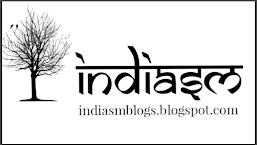Introduction:
Day 1 to 30
SB 3.31.2 Bhagavata Purana – On the first night, the virya, sperm and ovum mix, and on the fifth night the mixture ferments into a bubble. On the tenth night it develops into a form like a plum, and after that, it gradually turns into a lump of flesh or an egg, as the case may be.
Month 1 to 3
SB 3.31.3 Bhagavata Purana – In the course of a month, a head is formed, and at the end of two months the hands, feet and other limbs take shape. By the end of three months, the nails, fingers, toes, body hair, bones and skin appear, as do the organ of generation and the other apertures in the body, namely the eyes, nostrils, ears, mouth and anus.
Month 4 to 6
SB 3.31.4 Bhagavata Purana – Within four months from the date of conception, the seven essential ingredients of the body, namely chyle, blood, flesh, fat, bone, marrow and semen, come into existence. At the end of five months, hunger and thirst make themselves felt, and at the end of six months, the fetus, enclosed by the amnion, begins to move on the right side of the abdomen.
Month 6 and onwards
SB 3.31.5 Bhagavata Purana – Deriving its nutrition from the food and drink taken by the mother, the fetus grows and remains in that abominable residence of stools and urine, which is the breeding place of all kinds of worms.
SB 3.31.6 Bhagavata Purana – Bitten again and again all over the body by the hungry worms in the abdomen itself, the child suffers terrible agony because of his tenderness. He thus becomes unconscious moment after moment because of the terrible condition.
Month 9 and onwards
SB 3.31.22 Sreemad Bhagavatham – Lord Kapila continued: The ten-month-old living entity has these desires even while in the womb. But while he thus extols the Lord, the wind that helps parturition propels him forth with his face turned downward so that he may be born.
SB 3.31.23 Sreemad Bhagavatham – Pushed downward all of a sudden by the wind, the child comes out with great trouble, head downward, breathless and deprived of memory due to severe agony.
Ancient Indian tradition also says about a way of educating babies inside the womb, it's known as garbha sanskara
Ancient India saw great advancements in medical science. It seems very shocking as well as surprising to see such advancement in that ancient age. No one can ever figure out that from where the knowledge came. But from all these we can conclude that ancient Indian were more advanced than the present in case of intellectually and intelligence.





0 Comments
Please post your views